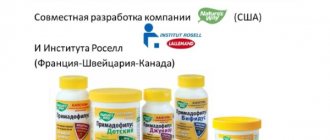Home | About us | Delivery | Advertisers | Login | Registration
The pharmacy is closed on Sundays and holidays.
- Medicines
- dietary supplementsVitamins
- Categories from A to Z
- Brands from A to Z
- Products from A to Z
- Medical equipment
- beauty
- Child
- Care
- Honey products appointments
- Herbs and herbal teas
- Medical nutrition
- Journey
- Making medicinesStock
Pharmacy online is the best pharmacy in Almaty, delivering medicines to Almaty. An online pharmacy or online pharmacy provides the following types of services: delivery of medicines, medicines to your home. Online pharmacy Almaty or online pharmacy Almaty delivers medicines to your home, as well as home delivery of medicines in Almaty.
my basket
Apteka84.kz is an online pharmacy that offers its customers medicines, medicinal and decorative cosmetics, dietary supplements, vitamins, baby food, intimate products for adults, medical equipment and thousands of other medical and cosmetic products at low prices. All data presented on the Apteka84.kz website is for informational purposes only and is not a substitute for professional medical care. Apteka84.kz strongly recommends that you carefully read the instructions for use contained in each package of medicines and other products. If you currently have any symptoms of the disease, you should seek help from a doctor. You should always tell your doctor or pharmacist about all the medicines you take. If you feel you need further help, please consult your local pharmacist or contact our GP online or by telephone.
© 2021 Pharmacy 84.
Tecnazole
Inside, immediately after eating, the capsules are swallowed whole.
For vulvovaginal candidiasis - 200 mg 2 times a day for 1 day or 200 mg 1 time a day for 3 days;
for dermatomycosis - 200 mg once a day for 7 days or 100 mg once a day for 15 days;
lesions of highly keratinized skin areas (dermatophytosis of the feet and hands) - 200 mg 2 times a day for 7 days or 100 mg 1 time a day for 30 days;
for pityriasis versicolor - 200 mg once a day for 7 days;
for candidiasis of the oral mucosa - 100 mg 1 time per day for 15 days (in some cases, in immunocompromised individuals, the bioavailability of itraconazole may decrease, which sometimes requires doubling the dose);
for keratomycosis - 200 mg once a day for 21 days (the duration of treatment depends on the clinical response);
for onychomycosis - 200 mg once a day for 3 months or 200 mg 2 times a day for 1 week per course. If the toenails are affected (regardless of the presence of damage to the fingernails), 3 courses are given with an interval of 3 weeks. If nails are affected only on the hands, 2 courses are given with an interval of 3 weeks.
Elimination of itraconazole from the skin and nails is slow; the optimal clinical response for dermatomycosis is achieved 2-4 months after completion of treatment, for onychomycosis - 6-9 months.
For systemic aspergillosis - 200 mg/day for 2-5 months; with progression and dissemination of the disease, the dose is increased to 200 mg 2 times a day.
For systemic candidiasis - 100-200 mg once a day for 3 weeks - 7 months; with progression and dissemination of the disease, the dose is increased to 200 mg 2 times a day.
For systemic cryptococcosis without signs of meningitis - 200 mg once a day for 2-12 months. For cryptococcal meningitis - 200 mg 2 times a day for 2-12 months.
Treatment of histoplasmosis begins with 200 mg once a day, the maintenance dose is 200 mg 2 times a day for 8 months.
For blastomycosis - 100 mg 1 time per day, maintenance dose - 200 mg 2 times per day for 6 months.
For sporotrichosis - 100 mg once a day for 3 months.
For paracoccidioidosis - 100 mg once a day for 6 months;
For chromomycosis - 100-200 mg once a day for 6 months.
Oral solution: orally, at least 1 hour before meals. When treating candidiasis of the oral mucosa or esophagus, the solution should be kept in the mouth for 20 seconds and then swallowed (you should not rinse your mouth with other liquids after taking itraconazole).
Treatment of candidiasis of the oral mucosa or esophagus - 100 mg 2 times a day or 200 mg 1 time a day for 7 days; if ineffective, treatment is extended for another 7 days.
Treatment of candidiasis of the oral mucosa or esophagus resistant to fluconazole - 100-200 mg 2 times a day for 14 days; if ineffective, treatment is extended for another 14 days. The maximum course of treatment at a dose of 400 mg/day if there is no improvement is 14 days.
Prevention of fungal infections - 5 mg/kg/day in 2 doses. Treatment begins simultaneously with the start of cytostatic therapy or 1 week before transplantation. Fungal infections occur when the number of neutrophils decreases to less than 100 cells/ml; treatment is continued until the number of neutrophils is restored (more than 1000 cells/ml).
Children are prescribed if the expected benefit outweighs the potential risk.
Teknazol 100 mg No. 4 caps.
Instructions for medical use of the drug Teknazol® Trade name Teknazol® International nonproprietary name Itraconazole Dosage form Capsules, 100 mg Composition One capsule contains the active substance - itraconazole 100 mg, excipients: hydroxypropyl methylcellulose, polyethylene glycol, neutral micropellets, capsule composition: caramel E 150, gelatin, azorubine E122, patent blue V E 131, titanium dioxide E 171 Description Hard gelatin capsules with a transparent light brown body and an opaque pink cap. The contents of the capsules are spherical micropellets of white or light cream color. Pharmacotherapeutic group Antifungal agents of systemic action. Triazole derivatives ATC code J02AC02 Pharmacological properties Pharmacokinetics After oral administration, the absolute bioavailability of Teknazol® is about 55%. Maximum bioavailability is observed when taken together with food. When taking a double dose of the drug, a threefold increase in the concentration of itraconazole in the blood plasma is observed. Tecnazole® is primarily metabolized in the liver, the main metabolite being hydroxyitraconazole. Teknazole® is 99.8% bound to plasma proteins, and hydroxyitraconazole is 99.5% bound. Tecnazole® is distributed in different tissues of the body. The concentration of itraconazole in the lungs, kidneys, liver, bone tissue, stomach, spleen, and skeletal muscles is 2–3 times higher than its concentration in blood plasma. Its accumulation in the skin is 4 times higher than its level in blood plasma. The therapeutic concentration of itraconazole in the skin persists for 2–4 weeks. after completion of a 4-week course of therapy. The therapeutic concentration of itraconazole in nail keratin is achieved 1 week after the start of treatment and persists for 6 months. after completion of a 3-month course of treatment. Therapeutic concentrations in vaginal tissues persist for 2 days after the end of a 3-day course of treatment at a dose of 200 mg/day. and 3 days after one-day use at a dose of 200 mg 2 times a day. Discharge also occurs with the secretion of the sebaceous and sweat glands of the skin. Excretion of the parent substance in feces varies between 3-18% of the dose taken. Renal excretion of unchanged introconazole is less than 0.03% of the administered dose. About 40% of the dose taken is excreted as inactive metabolites in the urine. The effect on plasma concentrations of itraconazole in liver failure has not been established. Therefore, patients with hepatic impairment should be closely monitored when using itraconazole. Pharmacodynamics Teknazol® is an antifungal drug belonging to the triazole group and has a wide spectrum of antifungal action; acts by inhibiting the synthesis of ergosterol, which is a vital component of the cell wall of fungi. Has a fungicidal effect. In vitro studies have demonstrated that Tecnazole® inhibits cytochrome P450-dependent ergosterol synthesis. Active against dermatophytes (Trichophyton spp., Microsporum spp., Epidermophyton floccosum), yeast-like fungi Candida spp. (including C. albicans, C. glabrata, C. krusei), molds (Cryptococcus neoformans, Aspergillus spp., Histoplasma spp., Paracoccidioides brasiliensis, Sporothrix schenckii, Fonsecaea spp., Cladosporium spp., Blastomyces dermatitidis), etc. Indications for use - mycosis of smooth skin - mycosis of the groin area - mycosis of the feet - mycosis of the hands - lichen versicolor - vulvovaginal candidiasis - aspergillosis - blastomycosis - histoplasmosis - esophageal candidiasis - oropharyngeal candidiasis - cryptococcosis - coccidioidomycosis - chromomycosis - onychomycosis - paracoccidis oidomycosis - sporotrichosis. Method of administration and dosage Teknazol® capsules are intended for oral use and should be taken immediately after meals for better absorption. Doses above 200 mg per day should be divided into two doses. Mycosis of smooth skin, mycosis of the groin area 100 mg (1 capsule) once a day for 15 days. Mycosis of the feet, mycosis of the hands 100 mg once a day for 30 days. Tinea versicolor 200 mg (2 capsules) once daily for 7 days. Aspergillosis 200 mg once or twice daily for at least 2-5 months. Blastomycosis or histoplasmosis 200 mg once daily. The dose may be increased to 400 mg in 100 mg increments in cases of a combination of fungal infection. Esophageal and oropharyngeal candidiasis 100–200 mg (1-2 capsules) once a day for 4 weeks. AIDS patients and patients with neutropenia: 200 mg (2 capsules) daily for 4 weeks. Chromomycosis 100-200 mg (1-2 capsules) once a day for 3-6 months. Coccidioidomycosis 200 mg twice daily for 6 weeks. Inactive cryptococcal meningitis 200 mg (1-2 capsules) once daily for 2 months - 1 year. Inactive histoplasmosis 200 mg (2 capsules) twice daily or 200 mg (2 capsules) once daily for 8 months. Cryptococcosis 200 mg once - twice a day for 2 months - 1 year. Paracoccidioidomycosis 100 mg once daily for 6 months. Sporotrichosis 100 mg once daily for 3 months. Mycotic keratitis 200 mg (2 capsules) once a day for 21 days. Vulvovaginal candidiasis 200 mg (2 capsules) once a day for 3 days or 200 mg twice a day for 1 day. Onychomycosis 100-200 mg (1-2 capsules) once a day for 3-6 months. One course of treatment is designed for 1 week, 200 mg (2 capsules) once a day. For onychomycosis of the hands, 2 courses are carried out, for onychomycosis of the hands and feet, 3 courses are carried out. The drug should not be used between courses. The effectiveness of treatment is assessed 2-4 weeks after cessation of therapy (for mycoses), after 6-9 months for onychomycosis (as nails change). This is due to the slow elimination of itraconazole from the skin and mucous membranes compared to plasma. There are no adequate recommendations regarding the use of the drug in older people. Side effects - dyspepsia, nausea, abdominal pain, constipation. Rarely: - headache, dizziness, peripheral neuropathy, fatigue, drowsiness - allergic reactions (such as itching, rash, urticaria, Quincke's edema, Stevens-Johnson syndrome) - reversible increase in the activity of liver enzymes, dysmenorrhea, hepatitis - hypokalemia - edema - hair loss - chronic congestive heart failure. Contraindications - hypersensitivity to this drug or to any of the components - children under 12 years of age. Drug interactions When used simultaneously: - with antacids, anticholinergic drugs, antispasmodics, H2 receptor antagonists and proton pump inhibitors, the absorption of itraconazole is reduced - with oral hypoglycemic drugs can lead to severe cases of hypoglycemia - with carbamazepine, can lead to a decrease in the level of itraconazole in the blood plasma . As a result, clinical deterioration and relapses may occur - with digoxin and cyclosporine, increased levels of digoxin and cyclosporine may be observed. Therefore, it is necessary to monitor the level of digoxin and cyclosporine in the blood plasma during the course of treatment with itraconazole and adjust the dosage accordingly - with rifampicin, phenytoin can lead to a decrease in the level of itraconazole in the blood plasma - with coumarin-like drugs, the anticoagulant effect of these drugs is enhanced. Therefore, it is necessary to monitor the prothrombin time in patients taking itraconazole and coumarin-like drugs together - with isoniazid the level of itraconazole in the plasma decreases - with terfinadine, astemizole leads to an increase in the plasma concentration of terfinadine and astemizole, which in rare cases can lead to dangerous cardiac arrhythmias . Therefore, the combined use of itraconazole with these drugs is contraindicated. Despite the fact that itraconazole is 99.8% bound to plasma proteins, there is no protein binding interaction between itraconazole and imipramine, propranolol, diazepam, cimetidine, indomethacin, tolbutamide. Itraconazole should not be prescribed together with misallastine, cisapride, simvastatin, lovastatin, midazolam, triazolam. Special instructions It is necessary to periodically monitor the level of liver enzymes in patients taking itraconazole for more than a month and in those patients who experience symptoms indicative of liver dysfunction (fatigue, abdominal pain, nausea, vomiting). In patients with compromised immunity (AIDS, after organ transplantation, neutropenia), an increase in dose may be required. In patients with elevated levels of transaminase activity in the blood serum, the drug is prescribed only in cases where the expected effect of treatment outweighs the possible risk of liver damage. In patients with liver cirrhosis and/or impaired renal function, the dose must be adjusted. In patients with achlorhydria or hypochlorhydria, the absorption of itraconazole may be reduced. Patients with reduced gastric acidity (for example, those taking H2 receptor blockers) are recommended to take the drug with carbonated water. The interval between taking antacids and itraconazole should be at least 2 hours. Women of childbearing age should use adequate methods of contraception throughout the course of treatment, until the onset of the first menstruation after its completion. If signs of neuropathy, heart failure, or liver dysfunction appear, treatment with itraconazole should be discontinued. Pregnancy and lactation During pregnancy, the drug is prescribed only in cases where the expected effect of treatment exceeds the potential risk to the fetus. If treatment with itraconazole is necessary during breastfeeding, the issue of stopping breastfeeding must be decided. Features of the effect of the drug on the ability to drive a vehicle or potentially dangerous machinery Patients should be informed about the dangers associated with driving vehicles, servicing mechanical equipment and other potentially hazardous activities. Overdose Symptoms: headache, dizziness, nausea, abdominal pain. Treatment: gastric lavage, taking activated carbon, symptomatic therapy. There is no specific antidote. Itraconazole is not eliminated by hemodialysis. Release form and packaging Capsules 100 mg, in blister packs of 4 or 5 capsules. 1 or 3 or 6 blisters in a cardboard box along with instructions for use Storage conditions Store at a temperature of 15°C - 30°C in a dry place, protected from light. Keep out of the reach of children! Shelf life 3 years Do not use after the expiration of the shelf life Conditions for dispensing from pharmacies By prescription Republic of Kazakhstan Almaty, st. Shevchenko 162 E.



